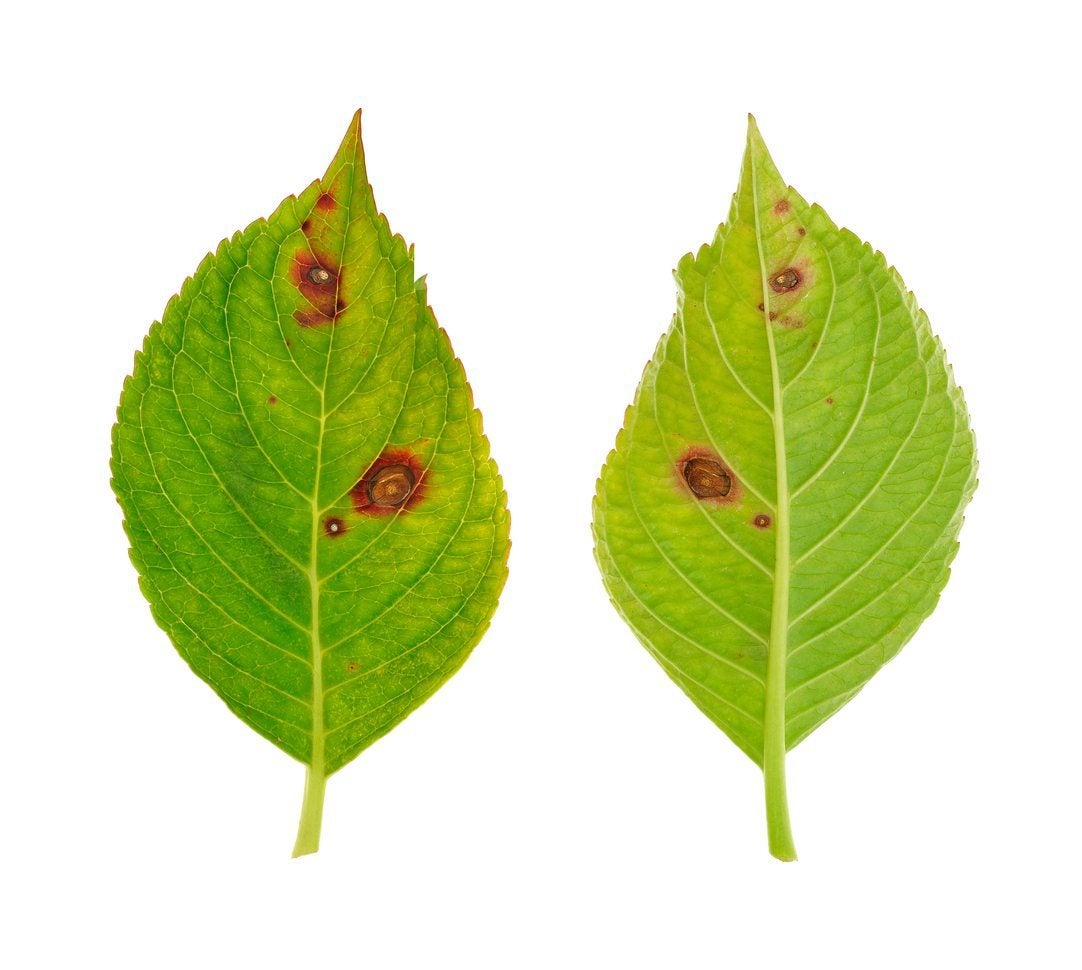Common Hydrangea Diseases : Tips On Treating A Sick Hydrangea


Hydrangeas are fairly easy plants to grow in many regions. There are several forms from which to choose, each with its own peccadilloes and problems. Diseases of hydrangea are typically foliar, although root and flowers may also become infected by fungal or viral problems. In most cases, the plant is able to recover with proper care. Ailing hydrangea symptoms do often start at the leaves, even if the affecting disease is root or insect based. The most prevalent causes of a sick hydrangea will be described in this article.
Diseases of Hydrangea
One of the more beautiful landscape plants are the hydrangeas. Whether you like the bigleaf, oakleaf, panicle or smooth leaf variety, they are generally considered easy to care for and provide a giant display of summer color. Common diseases of hydrangea can affect plant health but also the wondrous floral display for which they are known. Treating a sick hydrangea starts with recognizing common diseases and how to prevent and treat them. In order to discern what is going on with your plant, you need to start first by gathering any clues. Do you see any insects? Is the problem confined to the leaves or affecting stems and flowers? Once you have viewed the plant carefully, you can start deciding what might be happening to it and how to treat it.
Leaf spot diseases
Since, most ailing hydrangea symptoms are foliar, the number one cause is usually fungal. Leaf spots caused by Cercospora, Alternaria, Phyllosticta or Anthracnose stem from a fungal disease. They are most prevalent in moist conditions, although some occur in warm periods, while others form in cooler temperatures. Preventing water from remaining on leaves and treating with a good fungicide will usually conquer the problem. Bacterial leaf spot can be treated with a bactericide. Removing and destroying infected leaves in all cases can help prevent spread.
Viral hydrangea diseases
Viruses are transmitted to plants through insect activity, usually sucking pests, but also through mechanical means. There are 15 main viruses that affect all hydrangeas, but bigleaf varieties seem to be the most attacked. Symptoms are mottled leaves, chlorosis, blisters, rings, distortion and stunting. There are no accepted controls for viral infections. Prevention is your best defense. Sterilize pruning shears and knives before using them on a plant. Reduce the potential of pests by good cultivation and the removal of infected plant material and weeds around the hydrangea. The infection is systemic and will eventually infect all parts of the plant. Over time, the plant will succumb and need to be removed and destroyed to prevent infecting any other landscape plants.
Other hydrangea diseases
Rust and powdery mildew are two common issues in ornamental plants. Neither will kill the plant but they do affect the overall beauty. Powdery mildew looks just like it sounds and stems from another fungus. It will affect leaves and the flowers, especially buds, where it can destroy the flowers. If possible, increase air circulation, reduce humidity and remove infected plant material. Rust is another visual detraction to hydrangea. It stems from a pathogenic parasite and shows as reddish pustules on leaves. It may be spread through infected plant material or mechanical means. Opening the canopy of the plant and removing damaged material can help manage it. Botrytis blight attacks all forms of hydrangea. Water soaked lesions occur on leaves, flowers and stems. Treating a sick hydrangea with this disease requires careful sanitation and cultivation practices, and the application of a fungicide.
Sign up for the Gardening Know How newsletter today and receive a free copy of our e-book "How to Grow Delicious Tomatoes".

Bonnie Grant is a professional landscaper with a Certification in Urban Gardening. She has been gardening and writing for 15 years. A former professional chef, she has a passion for edible landscaping.